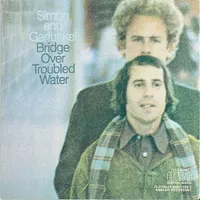https://www.youtube.com/watch?v=nvF5imxSaLI
https://www.youtube.com/watch?v=OKsXd_E6bDA
https://en.wikipedia.org/wiki/Bridge_over_Troubled_Water_(song)
Origins and Inspiration
Paul Simon was inspired by the 1959 gospel song “Oh Mary Don’t You Weep” by the Swan Silvertones. A line sung by Claude Jeter—“I’ll be your bridge over deep water if you trust in my name”—sparked the central metaphor of the song. Simon described the composition process as unusually swift and mysterious, calling it “a little hymn” that evolved into something far more epic thanks to Garfunkel and producer Roy Halee.
The third verse, “Sail on, silver girl,” was a reference to Simon’s then-wife, Peggy Harper, who had just noticed her first gray hairs. Though the verse was added late in the process and Simon was initially unsure about it, it became an integral part of the song’s emotional arc.
Lyrical Meaning
The lyrics of “Bridge Over Troubled Water” are a metaphor for unconditional support and emotional refuge. The narrator promises to be a steady presence during times of hardship:
“When you’re weary, feeling small / When tears are in your eyes, I’ll dry them all.”
The “bridge” symbolizes a pathway through pain, a promise to carry someone across life’s turbulent moments. The song’s message is universal—offering comfort to anyone facing adversity, loneliness, or despair.
Reception and Impact in 1970
Upon its release, the song was a massive commercial and critical success:
- It topped the Billboard Hot 100 for six consecutive weeks.
- It reached #1 in the UK, Canada, France, and New Zealand, and the top five in eight other countries.
- It won five Grammy Awards in 1971, including Record of the Year, Song of the Year, and Best Arrangement Accompanying Vocalists.
Despite its success, Simon later expressed regret over not singing the lead vocals himself, though Garfunkel’s ethereal delivery is widely credited with elevating the song’s emotional power.
Cultural Legacy
“Bridge Over Troubled Water” has become a cultural touchstone, frequently used in times of national mourning, charity efforts, and personal reflection. It has been covered by over 50 artists, including Elvis Presley, Aretha Franklin, and Johnny Cash, each bringing their own interpretation to its timeless message.
The song’s themes of empathy and resilience have made it a fixture in films, television, and public ceremonies. It has been used to raise funds for causes such as Hurricane Katrina relief and the Grenfell Tower fire, reinforcing its role as a beacon of hope.
What the Bridge Represents
In the song, the narrator offers to be a “bridge over troubled water” for someone who is suffering—emotionally weary, overwhelmed, or in pain. The “troubled water” symbolizes life’s hardships, such as grief, loneliness, or despair. The “bridge” is a metaphor for:
- Unconditional support: The narrator promises to carry the person through their difficulties, without judgment or expectation.
- Emotional safety: Like a physical bridge spanning a dangerous river, the metaphor suggests a safe passage through turmoil.
- Self-sacrifice: The bridge implies the narrator is willing to bear the burden so the other person doesn’t have to.
Spiritual and Gospel Roots
Paul Simon was inspired by gospel music, particularly the Swan Silvertones’ lyric: “I’ll be your bridge over deep water if you trust in my name.” This spiritual undertone adds a layer of divine comfort and grace, making the bridge not just a human gesture, but a transcendent one—akin to a spiritual lifeline.
Emotional Resonance
The metaphor resonates deeply because it speaks to a universal human need: to be supported when we’re vulnerable. It’s a promise of presence and empathy, a reminder that we’re not alone in our suffering.
Conclusion
“Bridge Over Troubled Water” stands as a monument to the healing power of music. Its blend of gospel, folk, and pop elements, paired with heartfelt lyrics and soaring vocals, has ensured its place in the pantheon of great American songs. More than five decades after its release, it continues to resonate with listeners, offering comfort and connection in times of need.
The bridge metaphor in “Bridge Over Troubled Water” is a powerful symbol of support, compassion, and emotional refuge.
